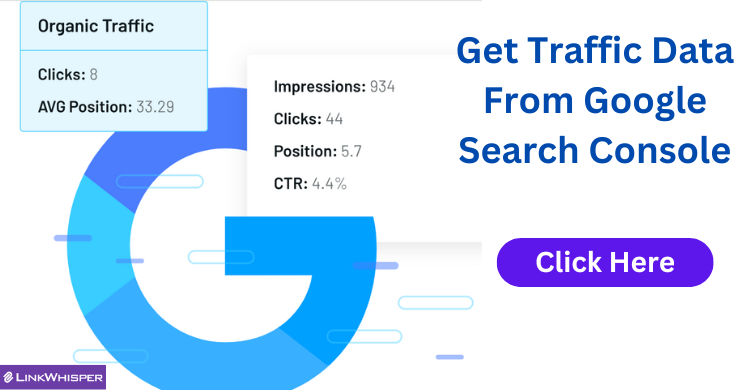What is partner marketing?
Partnership marketing, also referred to as partner marketing, involves a strategic alliance between entities, whether they are two businesses or a business and an individual, such as an opinion leader or influencer. The primary aim of these alliances is to achieve the shared goals of all parties involved.
What are the objectives? Businesses often view partners as advocates for their cooperative efforts. Having this trusted voice is essential for all businesses to connect with current and prospective customers. Partners contribute to enhancing brand awareness and visibility, boosting lead generation, and expanding the reach to a broader audience.
Marketing partnerships vs. business partnerships
At its essence, there is no notable disparity between marketing and business partnerships. It still entails collaboration between two parties. Nevertheless, there are various aspects that also differentiate these two terms.
Initially, it should be noted that a business partnership is invariably a legal association established through the means of a written agreement between two or more businesses or individuals. There are three primary categories of partnerships: general, limited, and limited liability, each of which necessitates official registration in the respective states where they conduct business operations.
On the contrary, marketing partnerships can be established solely through oral agreement, thus eliminating the need for legal proceedings. In simpler terms, a marketing partnership can be understood as a cooperative effort for marketing campaigns, with the possibility of excluding any legal obligations.
Taxation is another notable aspect of business partnerships. Each partner is required to pay income tax on the earnings acquired from the partnership. Individual partners are responsible for paying income tax on the portion of profit or loss that falls under their share. However, this may not be applicable to marketing partnerships. In situations like affiliate partnerships, affiliates are accountable for filing income tax returns. When considering content collaborations as partnerships, no taxes are paid as the value of brand visibility is not always quantifiable in monetary terms.
In conclusion, the purpose, duration, and level of legal or contractual terms distinguish business partnerships from marketing partnerships. Business partnerships are focused on achieving mutual financial gain, whereas marketing partnerships can be temporary and prioritize long-term strategies that may not provide immediate returns, such as brand building.
Purpose of marketing partnerships
What factors motivate businesses to form partnerships? The motivation behind partner marketing can vary from case to case. For some businesses, the challenge lies in allocating sufficient resources for achieving significant growth. On the other hand, some businesses seek partnerships to acquire the expertise that they lack. Ultimately, partner marketing allows both parties to collaborate and expand their reach to broader audiences.
As the world evolves, so does the business landscape, prompting businesses to acknowledge the importance of partnerships and collaborative marketing efforts to cope with these swift changes. The primary motivation behind entering into partnerships is to address any resource deficiencies, be it financial, operational, or pertaining to products and services.
The main benefits of partner marketing
The primary advantage of partner marketing is financial gain. Companies collaborate to attract a larger customer base and boost sales. Nevertheless, we recommend considering marketing partnerships from a broader perspective, beyond solely monetary objectives.
For companies that are already well-established or experiencing rapid growth, marketing partnerships offer the potential to increase their market share or enhance sales performance. Similarly, for smaller businesses, partnerships present an opportunity to enhance their industry visibility and reach their target audience.
Partnerships have the potential to generate distinct or extra customer value by merging the resources and expertise of different companies or individuals, leading to the development of fresh innovative solutions and products, improved and expedited services, and even advancements in the entire industry. For instance, numerous Saas companies prioritize product development and expansion, rather than service delivery. In such instances, intermediaries often have the ability to offer these services more efficiently than the manufacturer, thereby enhancing the product’s overall value to the customer.
Marketing partnerships have the potential to expand a business’s reach and influence the location and distribution of its products. Since many businesses initially operate at a local level, engaging in partnerships can be an effective approach to attract fresh customers within different market segments.
Lastly, it should be noted that a marketing partnership is both economical and beneficial. By combining different ideas and abilities, fruitful partnerships eliminate the need for expensive external services. Additionally, the majority of partnerships, like affiliate or influencer marketing, operate on a pay-per-performance basis, ensuring that you only pay for achieved outcomes.
Partnership Marketing: How to Find the Perfect Marketing Partner
Prior to embarking on your search for potential partners to collaborate with, establish the goals you aim to accomplish through these relationships. This will assist in guiding your search.
When seeking partnership, it is important to identify companies that have comparable target audiences and provide complementary products or services. Ensuring there are no conflicts of interest is of utmost importance when collaborating with such firms.
To ensure a more enjoyable partnership, it is advisable to also seek out companies that share the same values.
Next, explore potential partnership opportunities that will benefit both parties involved. Consider options such as:
- Hosting a joint webinar.
- Exchanging content with your respective audiences.
- Conducting a research study together or sharing research findings.
- Producing a premium piece of content together, like an eBook.
- Referring prospects to one another when appropriate.
It should not be expected that there will be a universal partnership template because the appropriate opportunities can differ significantly between partners.
Building the Relationship
Once you have identified potential partners, take the initiative and make contact.
If you choose to use email as your initial approach, it is important to keep it brief and to the point. Clearly state your intention for reaching out and emphasize the value of a partnership. Demonstrate that you have conducted research on the recipient. As you start to generate interest and receive responses, prioritize cultivating relationships. Remember that partnerships require significant commitment from all involved, so avoid rushing into them.
In the beginning, it is important to primarily focus on familiarizing oneself with each other and evaluating compatibility. If possible, phone calls or video conference calls should be prioritized over email chains. These interactions are more intimate and will provide a clearer understanding of the potential working dynamics.
Not everyone you speak with will be a suitable strategic marketing partner, but rest assured that even if that’s the case, you still have established a connection, and potential chances for collaboration could emerge in the future.
Setting Proper Expectations
Different partnerships will have different characteristics, therefore it is important to identify the collaboration opportunities that all companies are comfortable with and start planning. Considering there are multiple parties involved, initiating the planning process well ahead of the actual event is crucial. It is important to openly discuss all possible problems and establish appropriate expectations.
If you are planning to conduct a joint webinar, it is important to address certain details before finalizing your commitment. Let’s illustrate this with an example.
- Who are the presenters and who are the main points of contact at each firm?
- Which firm will host the webinar and set up the registration page?
- Who will be creating the presentation slides and what will the editing process look like?
- How will each firm promote the webinar, and when?
- What are the deadlines to keep things on track?
- Will the list of registrants be shared?
- Are there any follow-up activities that each firm will conduct?
Step by step, it is important to establish all the details right from the beginning in order to facilitate the partnership process and guarantee a positive experience for everyone involved. Successful strategic partnerships rely on setting expectations and planning effectively. Start by having a clear understanding of your objectives. Cultivate trustworthy relationships with companies that have the potential to assist you in achieving your goals, while also offering your support in reaching their own objectives. By doing so, you will enhance your marketing efforts and take them to the next level.







